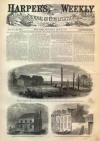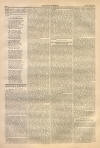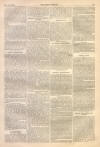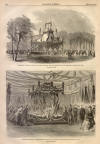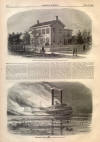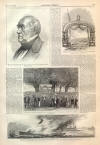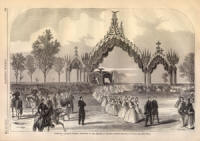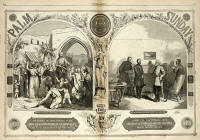Johnson Square in Savannah Georgia
|
|
This Site:
|
MAY 20, 1865.] HARPER'S WEEKLY. 317 PRESIDENT LINCOLN'S FUNERAL—MEMORIAL ARCH ERECTED AT SING SING, APRIL 25, 1865.-[SEE FIRST PAGE.]THE LATE VALENTINE MOTT, M.D. LL.D.—PHOTOGRAPHED By ROCKWOOD, BROADWAY, NEW YORK.[SEE FIRST PAGE.](Continued From Previous Page) course from Springfield to the Capital in 1861. Then all was uncertainty. But now, as they bore LINCOLN back to his rest, all was triumphant. Somehow they felt that this man had been linked in his life and his death inseparably with the national salvation that had been accomplished. It was fitting then, that, while they draped their streets with black, they should at the same time rear above his fallen head the arch of triumph. Henceforth Oak Ridge, at Springfield, becomes, like Mount Vernon, the Mecca of our pilgrimage. Not only LINCOLN'S burial-place but his former homestead will become the centre of unusual interest. We give on page 316 an illustration of the house which President LINCOLN for fifteen years made his home. It was here that he received the deputation which came to officially inform him of his nomination to the Presidency. It is situated a few squares from the State House. The Tribune correspondent thus describes it : " You remember that it is an unpretending two-story frame-house with a one-story, which, the house being on a street corner, fronts another street than the main building. It is, or rather was, some years ago, painted a yellow straw color, is plainly furnished, and contains but eight rooms altogether. In the small yard are several quite large apple trees, now in full blossom, and there is some shrubbery. The favorite chair in which he sat and the desk at which he wrote are still there, as are many other of his old personal surroundings. Today the hundreds of visitors are begging every thing available as souvenirs—sprigs from the shrubbery, blossoms from the trees, even palings from the fence for canes." A gentleman who recently visited the house thus writes us: "I found the ante-Presidential mansion to be, exteriorly, not unworthy of the occupancy of a leading lawyer in the capital of his State; while the interior, as shown by the kindly-welcoming tenants of the President of the United States, revealed an exceedingly comfortable and roomy house ; and as a portion of its movables was purchased from the landlord, I shall take the liberty of looking on the whole from a public point of view, and characterizing its furniture as at once abundant, good, and handsome, with enough of literary and asthetic appliances, in the way of books, pictures, statuettes, and ' fine litter' generally, to make it fully as elegant as is consistent with its character. The parlors, dining-room, and library on the ground-floor, and the bedrooms up stairs (in ascending the staircase to which its tall inmate of four years ago must have been obliged to bend himself nearly double, I should suppose, to save his own head from the bulkhead above), contain many relics of its former occupants, perhaps the most interesting being a large book-case in the back-parlor, reaching quite up to the ceiling which, how-ever, somewhat corresponds altitudinally to the bulk head of the staircase. It is a substantial, handsome affair, of solid black walnut (if the somewhat dim light in which I saw it did not deceive me), with-out carving or ornament, the glazed upper leaves displaying a goodly array of standard books; and the lower portion having a folding-leaf desk, at which our worthy President used to sit, and with a row of pigeon-holes above, which doubtless used to hold his briefs when he was country lawyer. " When the ante-Presidential dwelling was first taken possession of by its late occupants it was but a one-and-a-half-story house, guiltless of balcony, cornices, brackets, or 'fancy mouldings' of any kind, in all of which it now rejoices ; but as the family and legal reputation it jointly sheltered simultaneously increased, the mistress thereof as is the wont in such cases—asked for more room and a more fitting exterior. Perhaps the master did not fancy having the legal arguments revolved in his brain in front of the folding-leaf desk and its superjacent pigeon-holes knocked out of it by the din of hammering and sawing, or perhaps he thought it was best to leave well enough alone ; but, for whatever reason, the desires of the mistress were not responded to as promptly as she desired; once when he was absent—attending some circuit, perhaps—she got the carpenters, and painters, and what not, at work, to add a story to its height, and 'put on some ginger-bread,' as he afterward expressed it. In due time the proprietor returned, and beholding the transformation, went about the town asking his neighbors if they knew where one ABRAHAM LINCOLN lived, and whose grand house it was that had gone up since he left ?" A letter to the Chicago Tribune speaks thus of the present appearance of the house: " Plain, unpretending, and substantial, it is the type of Mr. LINCOLN'S character. The shrubbery in front of the house, principally rose-bushes, many of them planted by Mr. LINCOLN'S own hand, are in full leaf; and it beautiful rose vine clambers up one of the door-posts, and trails over the cornice. Lilies are sprinkled here and there, and closely-shaven trim grass-plats run down to the neat pick-et fence surmounting the wall. The columns of the piazza at the rear of the house are also twined with vines and creepers; and the apple-trees between the house and the barns showered the ground with the pink and white of the blossoms, and filled the air with fragrance ". MEETING OF CITIZENS AT JOHNSON SQUARE, SAVANNAH, APRIL 22, 1865.—PHOTOGRAPHED BY READING & Co., SAVANNAH. [SEE FIRST PAGE.]BURNING OF THE REBEL RAM " WEBB" BELOW NEW ORLEANS, APRIL 24, 1865.-SKETCHED BY R. WEIR.— [ SEE PAGE 307. ]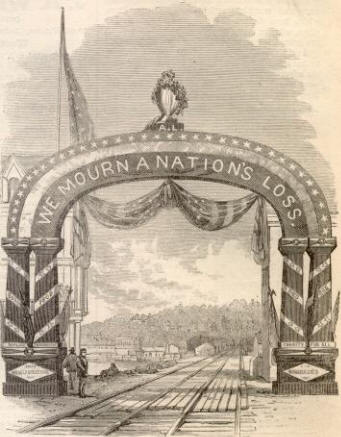 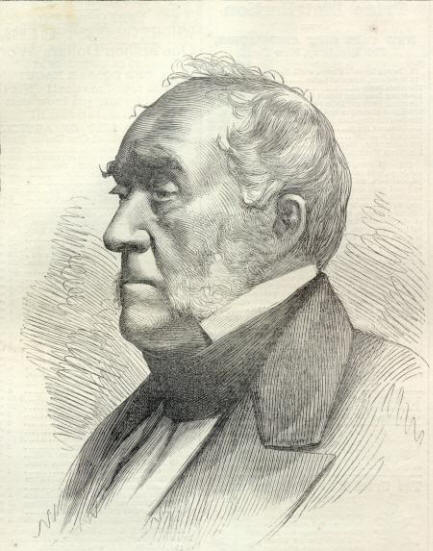 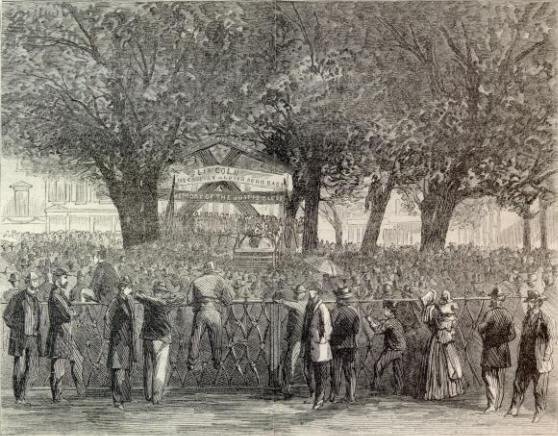  |
||||||||||||||||||
|
|
||
|
|
Site Copyright 2003-2018 Son of the South. For Questions or comments about this collection, contact paul@sonofthesouth.net |
|
|
Are you Scared and Confused? Read My Snake Story, a story of hope and encouragement, to help you face your fears. |
||
